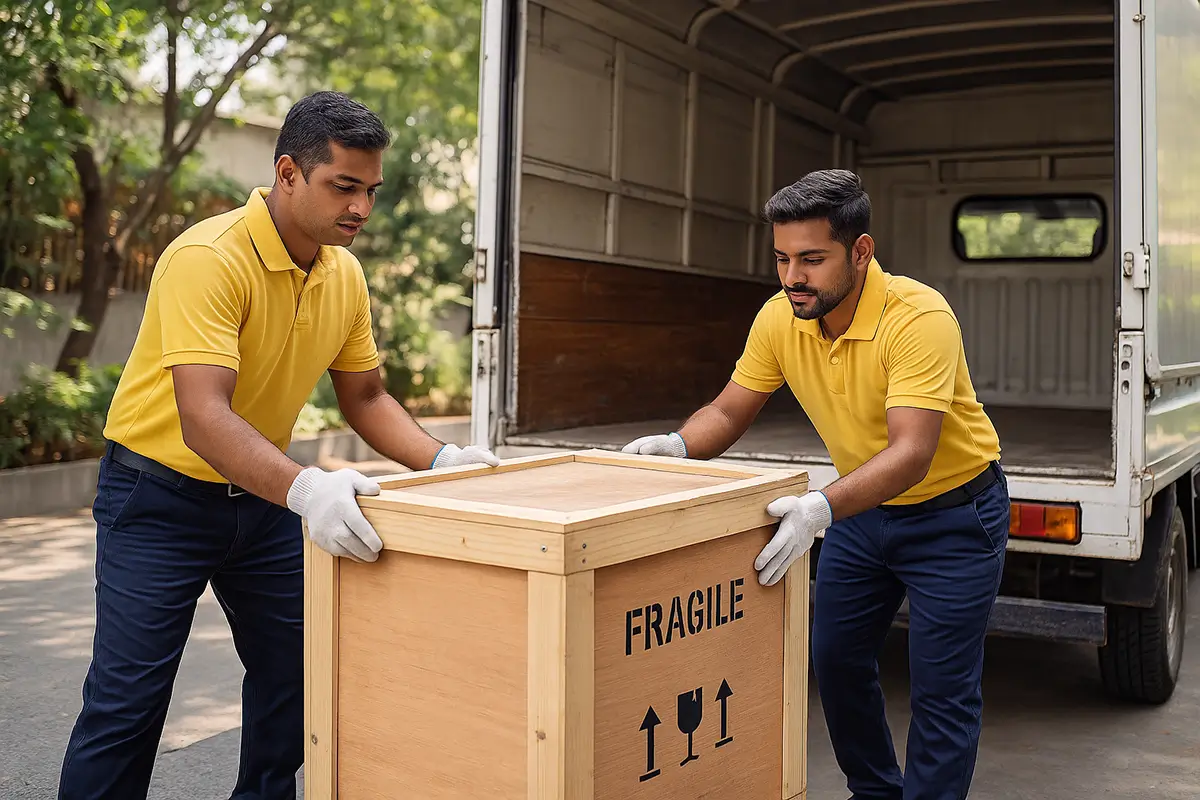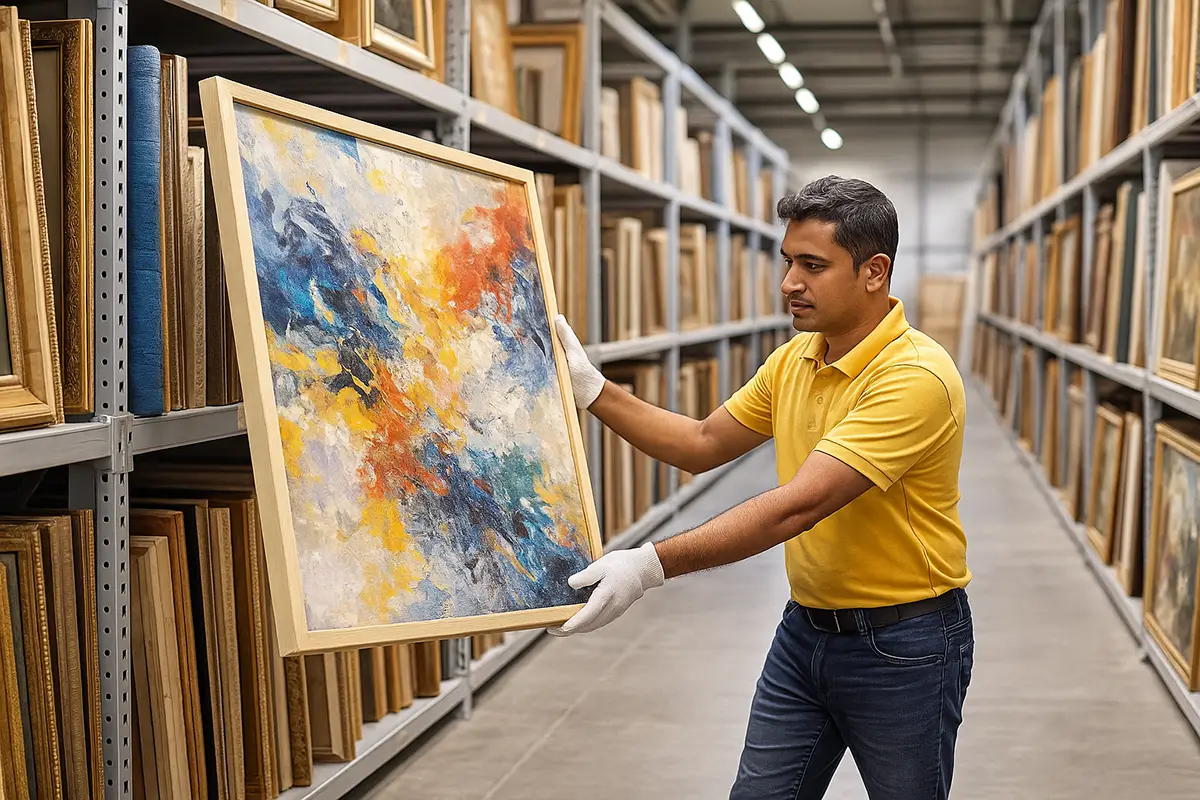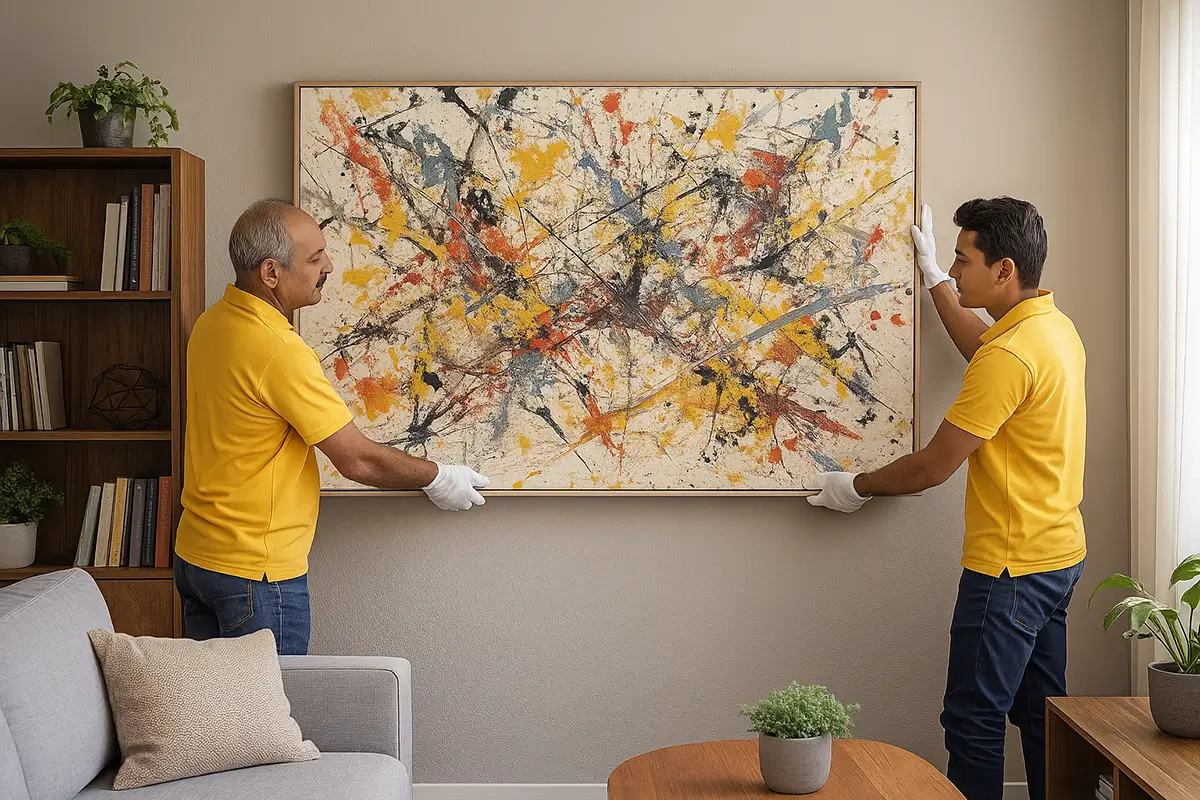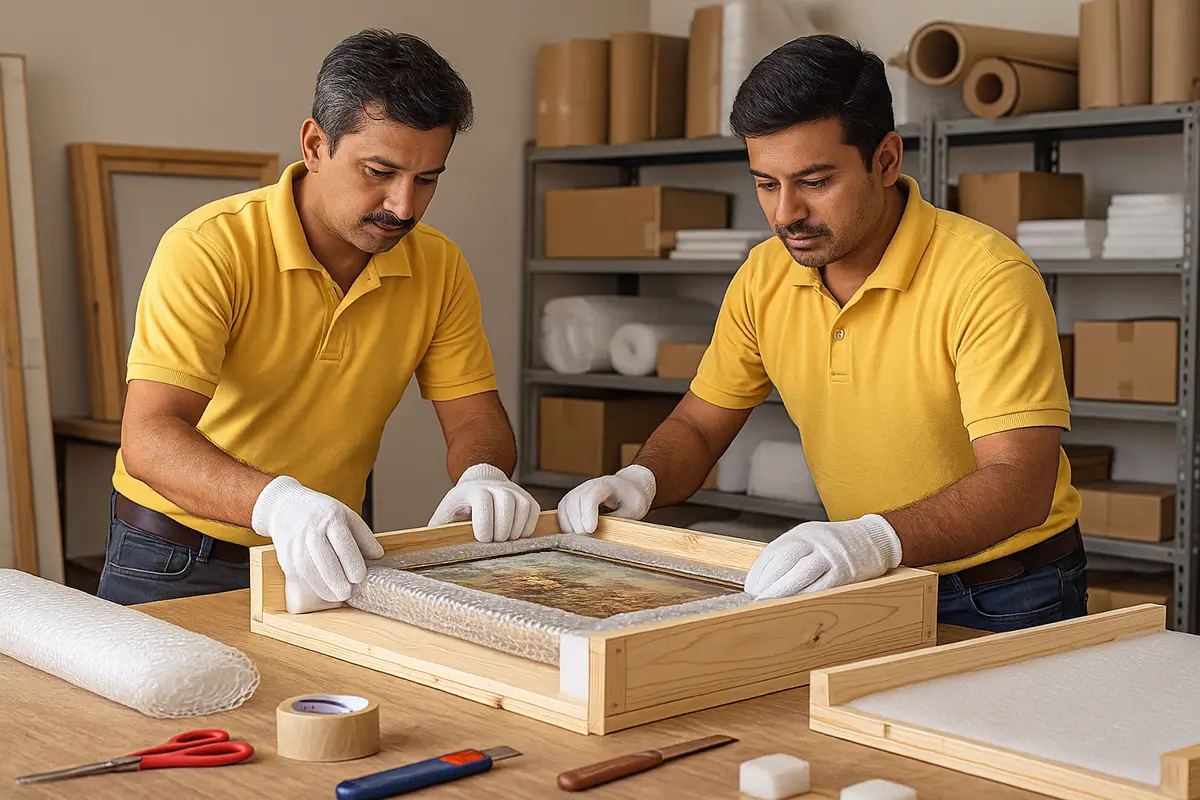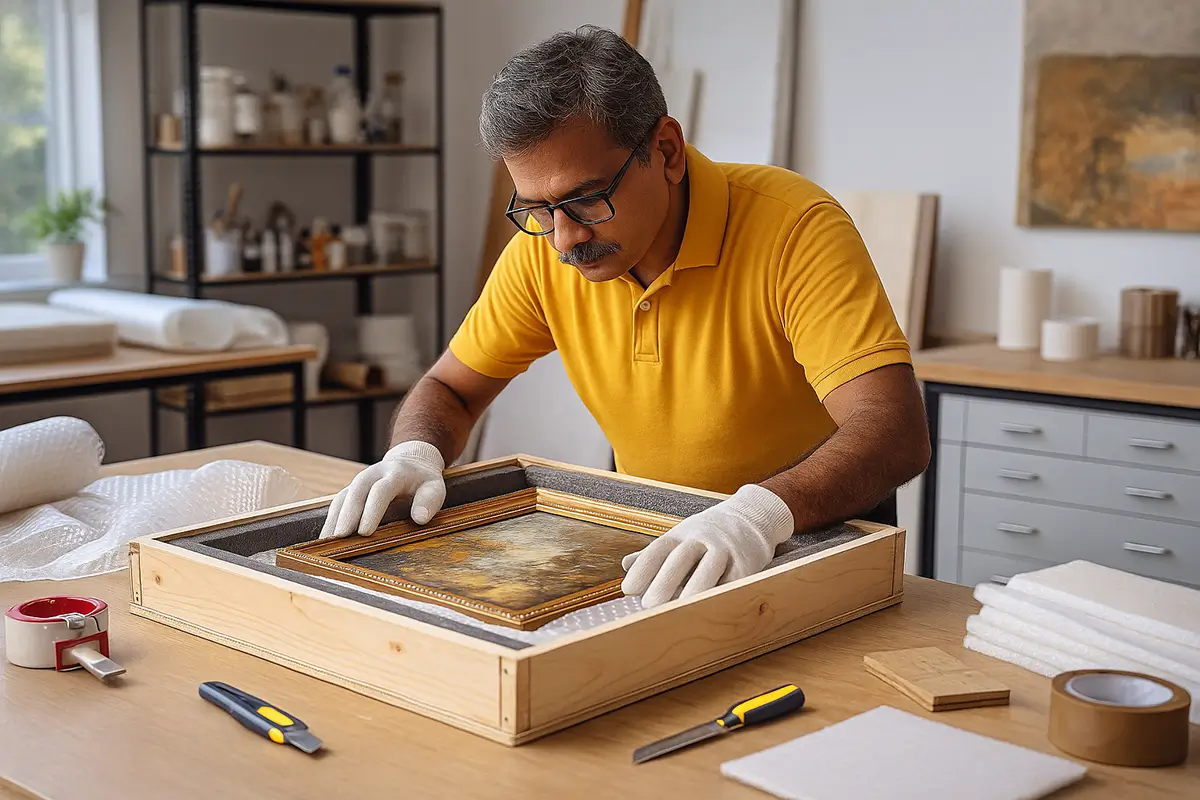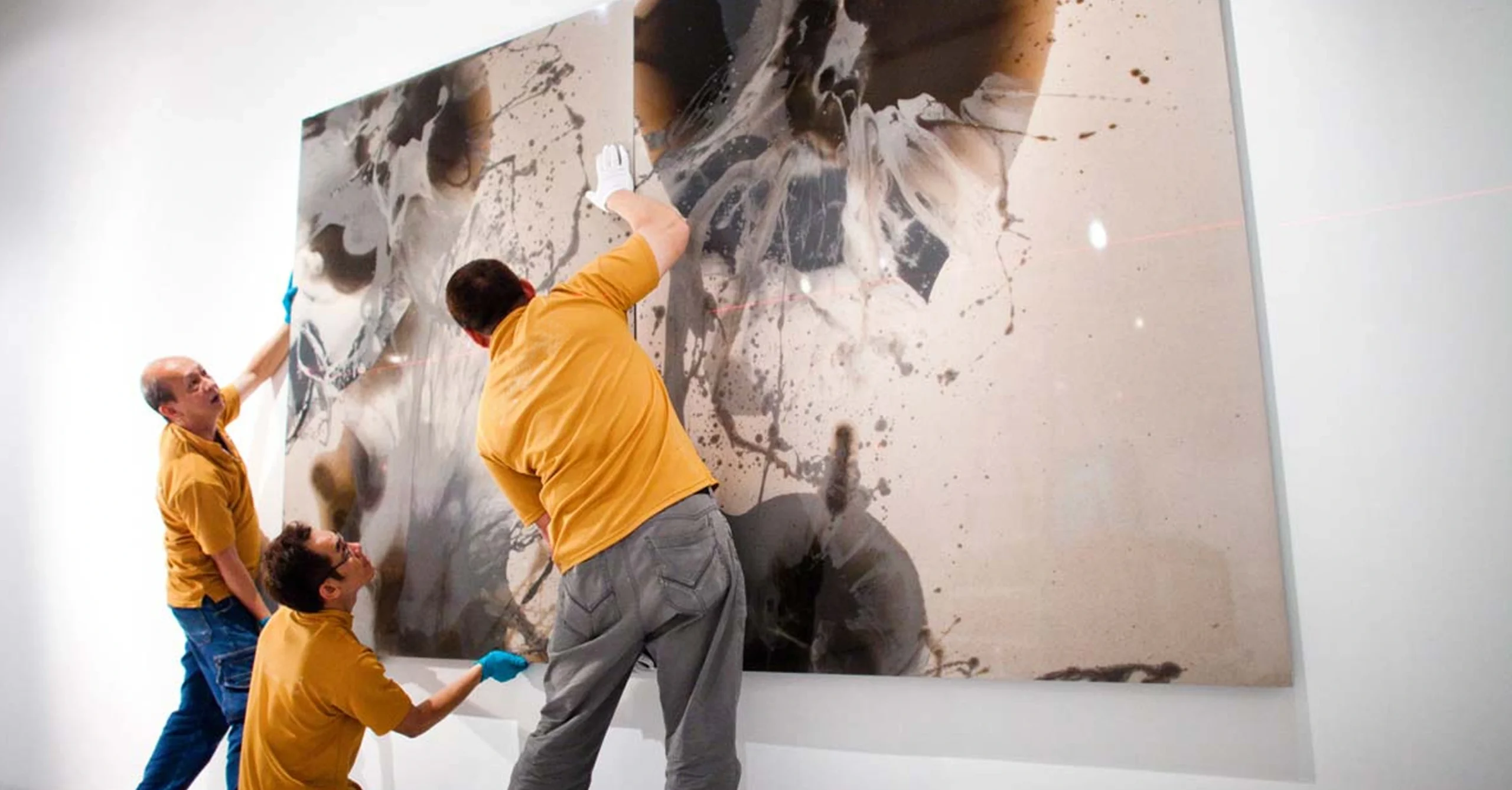Introduction: The stories behind smooth journeys
When an artwork arrives at its destination safely, it is easy to take the logistics for granted. But behind every successful delivery lies a story of planning, risk management, and professional expertise.
In India, with its diverse climates, infrastructural challenges, and complex regulatory frameworks, transporting art requires far more than just packing and shipping. It requires strategy, documentation, and foresight.
This article presents real-world case studies (anonymised for client confidentiality) that highlight how art logistics has been managed successfully for collectors, corporates, and institutions. Each example demonstrates how specialised planning prevented risks and ensured cultural and financial preservation.
Case Study 1: Corporate Office Relocation in Bengaluru
The context
A multinational IT company in Bengaluru decided to relocate its headquarters. Among its assets were over 150 artworks—a mix of modern Indian paintings, sculptures, and installations—displayed across lobbies, corridors, and meeting rooms.
The challenge
- Moving high-value works during the peak of summer (40°C+).
- Ensuring minimal disruption to corporate operations.
- Managing multiple materials: canvases, framed works, stone sculptures.
The solution
- Custom crating with vapour barriers and silica gel packets.
- Climate-controlled vans with air-ride suspension to handle road conditions.
- Sequential packing and unpacking aligned with office move schedules.
- Condition reports and valuations for every piece to ensure insurance coverage.
The outcome
All artworks were relocated without a single incident of damage. The company’s collection was integrated seamlessly into the new space, with updated documentation supporting insurance renewals.
Lesson: Corporate relocations demand synchronisation between logistics timelines and business operations.
Case Study 2: International Museum Loan from Delhi
The context
A museum in Delhi agreed to loan several miniature paintings and bronze artefacts to a European exhibition.
The challenge
- Antiquities requiring ASI (Archaeological Survey of India) export permits.
- Fragile miniatures sensitive to humidity.
- International customs and insurance compliance.
The solution
- Condition reporting and authentication prior to movement.
- Custom-built microclimate crates with humidity stabilisers.
- Partnership with an air cargo provider experienced in art shipments.
- Insurance covering door-to-door transit and exhibition duration.
The outcome
The works travelled to Europe, were displayed for six months, and returned safely with no deterioration. The successful loan enhanced the museum’s global credibility and cultural diplomacy.
Lesson: International loans require a combination of compliance, climate control, and insurance.
Case Study 3: Private Collector in Hyderabad
The context
A private collector owned several large contemporary canvases and sculptures acquired over decades. They decided to move residences within the same city.
The challenge
- Works were oversized, requiring stairway manoeuvring.
- Summer humidity posed risks to canvases.
- Lack of proper documentation for older acquisitions.
The solution
- Professional art handlers used lifting equipment for oversized works.
- Protective wrapping with acid-free materials and vapour barriers.
- Valuation and provenance research for undocumented works.
- Updated digital cataloging to consolidate collection records.
The outcome
The move not only protected the artworks but also created the collector’s first comprehensive collection database, improving both financial and cultural management.
Lesson: Even short-distance moves require professional handling and documentation.
Case Study 4: Art Fair Shipment from Mumbai
The context
A gallery in Mumbai prepared to showcase 20 works at an international art fair in Singapore.
The challenge
- Tight deadlines for exhibition setup.
- Customs clearance for temporary export.
- Guaranteeing return of unsold works without duty complications.
The solution
- Temporary export documentation arranged with customs authorities.
- Climate-controlled air freight with modular crating.
- Condition reporting before and after exhibition.
- Insurance tailored for temporary exports and international fairs.
The outcome
All works arrived on time, exhibited successfully, and unsold works were re-imported without customs penalties. The gallery strengthened its international market presence.
Lesson: For art fairs, time-sensitive planning and customs expertise are as important as safe packing.
Case Study 5: Public Art Installation in Chennai
The context
A real estate developer commissioned a large outdoor sculpture for a corporate park in Chennai. The work, created in Delhi, had to be transported and installed.
The challenge
- Size and weight of the sculpture required special handling.
- Coastal climate in Chennai demanded protective coatings.
- Coordination between artist, logistics team, and installation crew.
The solution
- Custom metal frame designed for stability during transit.
- Flatbed trucks with vibration control.
- Climate-resistant protective layers applied before transport.
- Installation supported by cranes and structural engineers.
The outcome
The sculpture was installed successfully, becoming a landmark feature of the park. The project enhanced the developer’s reputation for blending art and architecture.
Lesson: Large-scale installations require engineering and logistics collaboration.
Case Study 6: Auction Shipment for a Collector in Kolkata
The context
A collector in Kolkata consigned two works to an international auction house in London.
The challenge
- Works required authentication and valuation before export.
- Customs clearance had to match auction house documentation.
- Insurance needed to cover global transit and auction handling.
The solution
- Professional authentication reports prepared with provenance checks.
- Fair market valuations provided for customs declaration.
- Partnered with international logistics firms for coordinated handling.
- Insurance extended beyond shipment to cover auction house custody.
The outcome
The works were auctioned successfully at values higher than estimates, boosting the collector’s financial returns.
Lesson: For auctions, documentation and valuation drive both compliance and profitability.
Broader insights from these case studies
Across these examples, several themes emerge:
- Documentation underpins everything. From customs to insurance, paperwork ensures defensibility.
- Climate control is essential. Works suffer when exposed to India’s heat and humidity without protection.
- Professional handling reduces risks. General movers are never suitable for high-value art.
- Customs and compliance are complex. Early planning avoids delays and penalties.
- Integration matters. The best outcomes came when collectors worked with providers managing the full cycle—packing, insurance, transport, and compliance.
Best practices for art logistics in India
- Plan early—weeks, if not months, before major shipments.
- Bundle services—combine packing, insurance, and customs with one specialist provider.
- Revalue regularly—ensure insurance reflects current market values.
- Train staff—basic art handling training reduces in-house risks.
- Document digitally—maintain a central archive of provenance, valuations, and reports.
- Use climate-sensitive transport—especially in summers and monsoons.
The future of art logistics in India
Professionalisation
Corporates, family offices, and museums are demanding global-standard services.
Technology integration
- IoT sensors for real-time monitoring of temperature, humidity, and shocks.
- Blockchain provenance for transparent customs clearance.
- AI-driven valuation for accurate insurance coverage.
Globalisation
As Indian art gains visibility abroad, cross-border transport will increase, requiring even higher levels of compliance and professionalism.
Conclusion: Success is never accidental
The smooth arrival of a painting at a gallery, the safe installation of a sculpture, or the timely loan of antiquities abroad are not just logistical victories—they are strategic successes.
These case studies prove that with the right blend of documentation, insurance, climate control, and professional handling, art can travel safely across India and the world.Learn more about ourArt Logistics Services. At TurmericEarth, we bring together expertise, technology, and cultural sensitivity to deliver seamless art logistics—protecting both the aesthetic value and financial worth of your collection.



